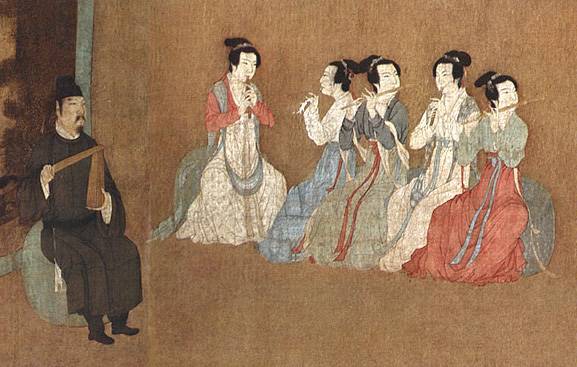The Elegant Heritage of Hanfu
The hanfu, a traditional Chinese garment with a history spanning over three millennia, has become more than just a piece of Clothing—it is a symbol of Chinese civilization and its rich cultural heritage. The intricate designs and patterns woven into each hanfu tell a story of the dynasties that shaped China’s past. As we delve into the various styles of hanfu, we embark on a journey through time, exploring the evolution of fashion and its reflection on the social and political landscape of ancient China.

Understanding the Structure of Hanfu
The structure of a hanfu is rooted in the principles of symmetry and harmony, embodying the philosophical beliefs of the Chinese people. Each piece is meticulously crafted, with attention to detail that reflects the artisan’s skill and the wearer’s status. The traditional hanfu consists of a top (shang) and a skirt (xia), which are tied together to form a flowing silhouette. This design not only provides comfort but also a sense of elegance and grace.

The Cultural Significance of Hanfu
The hanfu is more than an article of clothing; it is a canvas that showcases the cultural values and aesthetics of ancient China. The choice of colors, materials, and embroidery patterns all carry deep meanings and are often associated with specific social ranks or events. For instance, the color red is often used in weddings, symbolizing good fortune and joy, while the dragon and phoenix motifs are reserved for the emperor and empress, representing power and authority.

Evolution of Hanfu Styles Through Dynasties
The evolution of hanfu styles is a fascinating study of how fashion adapts to the changing times. From the simplicity of the Han dynasty to the opulence of the Tang dynasty, each era has left its imprint on the hanfu. The Tang dynasty, known for its openness to foreign cultures, saw the hanfu incorporate elements from Central Asia, such as tighter sleeves and higher waistlines, which accentuated the figure and allowed for greater freedom of movement.

The Revival of Hanfu in Modern Times
The resurgence of hanfu in contemporary China is a testament to the enduring appeal of traditional culture. Young people are embracing the hanfu as a form of cultural expression and identity, wearing it on special occasions or even as everyday attire. This revival is not just about aesthetics; it is a movement that seeks to reconnect with the past and celebrate the beauty of Chinese heritage.

Conclusion
The hanfu is a living artifact that continues to inspire and captivate. As we explore its various styles and cultural significance, we gain a deeper appreciation for the craftsmanship and history that define this iconic garment. Whether worn as a nod to tradition or as a fashion statement, the hanfu remains a proud emblem of China’s cultural legacy.







As a sustainability advocate, I appreciate the article’s emphasis on the cultural significance of hanfu. However, I would like to see more discussion on the environmental impact of producing such intricate garments. Are there sustainable practices in hanfu production? This aspect could add significant value to the article.
As a sustainability consultant, I appreciate the article’s emphasis on the cultural significance of hanfu. However, I would like to see more discussion on the environmental impact of producing such intricate garments. Are there sustainable practices in hanfu production? This aspect could add significant value to the article.
As an environmental scientist, I appreciate the article’s emphasis on the cultural significance of hanfu. However, I would like to see more discussion on the environmental impact of producing such intricate garments. Are there sustainable practices in hanfu production? This aspect could add significant value to the article.
I’m a fashion blogger from Los Angeles, and I find the hanfu’s revival in contemporary China inspiring. The article’s exploration of how hanfu styles have adapted to different eras is a lesson in adaptive fashion. The modern revival of hanfu as a form of cultural expression is a beautiful blend of tradition and contemporary aesthetics.
As a textile artist, I’m in awe of the hanfu’s intricate designs and the attention to detail. The article’s exploration of the hanfu’s cultural significance, such as the use of colors and motifs, provides a deeper understanding of Chinese culture. The revival of hanfu among the youth is a testament to the enduring appeal of tradition.
I’m a stay-at-home mom from Tokyo, and I find the hanfu’s design aesthetics truly captivating. The flowing silhouette and the meticulous craftsmanship are elements that could inspire modern fashion. I would love to see more practical advice on how to incorporate hanfu elements into everyday wear.